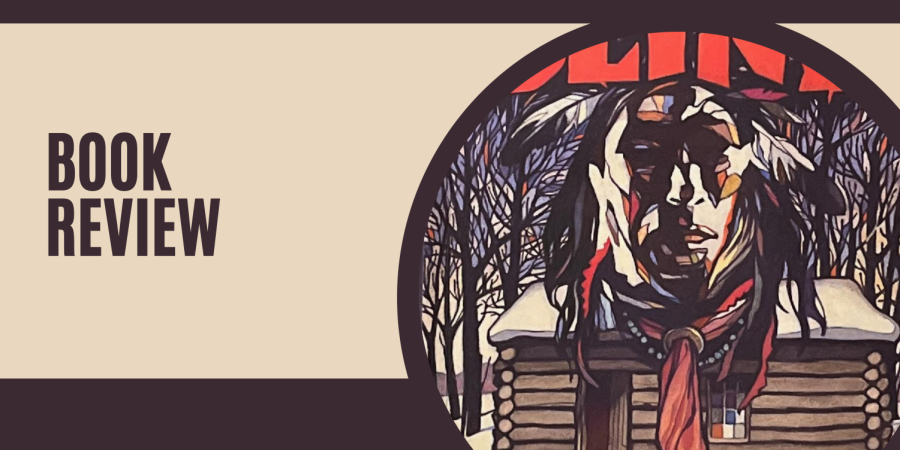Review: An ignored Iowan perspective brought to light
Book Review: ‘Moon of the Snow Blind: Spirit Lake’ by Gary Kelley
November 10, 2021
In high school, I remember being taught about the Spirit Lake massacre, but I was only ever taught the account of Abigail Gardner. When I learned about the massacre, my teacher used various slurs to refer to the Dakota.
What I was never taught was that the Dakota had been starved, murdered and kidnapped by settlers in the years prior to the massacre. What I was never taught was the struggle and immense pain that Chief Inkpaduta faced himself. Inkpaduta lost his wives, his mother and his children. He’d lost almost everything.
I picked up this graphic novel by chance on a trip to Barnes and Noble. One of the employees set it aside on a display with a note describing how the book detailed an important piece of Iowan history from an Indigenous perspective. Immediately, I was intrigued. I’d like to thank that employee for highlighting this graphic novel, as I would have never seen it otherwise.
For Native American Heritage Month, I’ve been challenging myself to read books written from Indigenous perspectives or by Indigenous authors. The idea came from one of my friends, who told me about how for Black History Month she purchased something from a Black small business owner every time she got paid. So far, I’ve read ‘Winter Counts’ by David Heska Wambli Weiden and I am currently reading ‘Firekeepers Daughter’ by Angeline Bouley.
‘Moon of the Snow Blind’ has been my fastest read for me this month. The graphic novel is a short 184-page graphic novel, detailing the events leading up to the massacre at the famous Gardner cabin beside the Iowan great lakes. ‘Moon of the Snow Blind’ is author Gary Kelley’s first graphic novel. I was pleasantly surprised to see that Kelley is a Cedar Falls local – a town 45 minutes from my own hometown.
The graphic novel is a collection of several historic documents including Abigail Gardner’s own autobiography, ‘History of the Spirit Lake Massacre.’
There’s no minimizing the death toll at Spirit Lake; however, the insight provided by Kelley’s novel is extremely useful in providing context and clarity to the situation. In my own educational experience, Inkpaduta and his band of Dakotas were painted as brutal with no motive for doing so. This book provides crucial context to the situation – the author begins the novel by stating that there are two sides to every story.
Aside from the history, I really enjoyed the artwork and style of the book. Kelley breaks up each month of the story with the Dakota name for the month – this is where the book’s title comes from. The Moon of the Snowblind is March when the massacre took place.
Kelley does a great job displaying the morbid nature of the incident through his art and the dialogue. Kelley never once makes light of the situation. The entire graphic novel is drawn in black and white, which I felt added another sense of severity and loss.
I would definitely recommend anyone interested in learning more about Indigenous Iowans, or the history of Iowa in general, to give this graphic novel a read. It took me one weekend to tear through the graphic novel, and I was engaged from start to finish.
For Native American Heritage Month, I would encourage Iowans to look into the history of the state from an Indigenous perspective.







